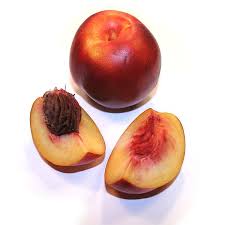 When kids are sick, all bets are off, especially with infants and preverbal kiddos– appetite, hunger signals– it's just hard. Are they crying because their ears or throat hurt or are they hungry?
When kids are sick, all bets are off, especially with infants and preverbal kiddos– appetite, hunger signals– it's just hard. Are they crying because their ears or throat hurt or are they hungry?A client called the other day, worried that his baby boy was eating less again. They had made major gains with some feeding problems, and this illness was just plain scary. Dad was resorting to some feeding practices that hadn't been helpful earlier on, but he worried about his son's intake.
Taking care of sick kids IS scary and confusing for everyone, but especially for parents who already worry about a child's intake or size.
In general, sick infants and children eat less. When you are cued in to your child's appetite it can be an early sign that something is going on. My own daughter seemed to lose her appetite a few days before the runny nose or diarrhea (yuck) would start.
It can take more than a week for appetite to return to normal, and if your child is on any medicines, particularly antibiotics, that can make it even worse. Antibiotics taste bad and can interfere with normal bacteria in the gut.
Support your child by offering foods and drink often when they are ill. Throw away the usual schedule when your toddler is sick and let them nibble and sip throughout the day. That infant who normally nurses for 20 minutes might only nurse for 5, or bottle intake might drop in terms of quantity too. Instead of waiting 3-4 hours between feeds, try offering the bottle more often and not pressuring when they refuse it.
Kids don't have to eat much when they are ill for a few days. Even a few bites might be all they take. Consider giving popsicles, jello or watered down juice to age appropriate kids when they are sick to boost fluid intake.
Have faith that their appetite will return when they feel better, and see your doctor if it doesn't. Know that the trust model of feeding is flexible and that you can get back to regular feeding and schedules when your child is better. (There might be a little whining for jello, but you'll know how to handle that too!)
If you have any questions or concerns, be sure to see your child's health care provider. If they are listless or acting off, don't hesitate to contact and ask them questions. (Kids can get dehydrated with diarrheal or vomiting illnesses, so be sure to check in with your doc.)


 And today we had a "tea party" with her tea set. (It was given to her at age 2, but she wasn't ready for it so I put it away and she got it again this Christmas...)
And today we had a "tea party" with her tea set. (It was given to her at age 2, but she wasn't ready for it so I put it away and she got it again this Christmas...)
 We had swim class last night and then I had a school outing right after dinner, so it was mac n cheese night. This is one of M's favorite meals. Lots of kids eat mac n cheese for dinner. Families tell me the kids eat mac n cheese, mom and dad eat "real food."
We had swim class last night and then I had a school outing right after dinner, so it was mac n cheese night. This is one of M's favorite meals. Lots of kids eat mac n cheese for dinner. Families tell me the kids eat mac n cheese, mom and dad eat "real food."


























 HH!!!!" I smile politely, nodding the mommy nod to the other mommies, "You know how it goes, eh?" The screaming continues to the parking lot where I get a couple inquiring looks, and in the car where we usually have a nice chat while she eats a quiet snack before the park. I actually stand outside the car while she thrashes around crying inside.
HH!!!!" I smile politely, nodding the mommy nod to the other mommies, "You know how it goes, eh?" The screaming continues to the parking lot where I get a couple inquiring looks, and in the car where we usually have a nice chat while she eats a quiet snack before the park. I actually stand outside the car while she thrashes around crying inside. 

